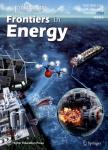版权所有:内蒙古大学图书馆 技术提供:维普资讯• 智图
内蒙古自治区呼和浩特市赛罕区大学西街235号 邮编: 010021

作者机构:State Key Laboratory of Multiphase Flow in Power Engineering School of Energy and Power Engineering Xi'an Jiaotong University Xi'an 710049 China Henan Xinfei Electric Co. Ltd. Xinxiang 453002 China
出 版 物:《Frontiers of Energy and Power Engineering in China》 (Front. Energy Power Eng. China)
年 卷 期:2008年第2卷第1期
页 面:36-42页
学科分类:0808[工学-电气工程] 08[工学] 0807[工学-动力工程及工程热物理]
基 金:National Natural Science Foundation of China, NSFC, (50521604) National Natural Science Foundation of China, NSFC Program for New Century Excellent Talents in University, NCET, (NCET-04-0925) Program for New Century Excellent Talents in University, NCET
主 题:Available energy analysis Chest refrigerator Double-capillary tube Pyrology
摘 要:A new tandem double-capillary tube refrigeration system for refrigerator-freezers is proposed. A capillary tube was added between the two evaporators in the fresh and frozen food storage chests to raise the evaporation temperature of the refrigerating chamber, and reduce the heat exchange temperature difference and the available energy loss. Peng-Robinson (P-R) equation of state was adopted to calculate the thermodynamic properties of the refrigerants, and the available energy analysis of the vapor compression refrigeration cycle was programmed to calculate the thermodynamic performances of the new and the conventional refrigeration cycle of the refrigerator-freezer. The calculation results show that the available energy efficiency of the conventional refrigeration cycle of the refrigerator-freezer is 21.20% and 20.57%, respectively when the refrigerant is R12 and R134a, while that of the double-capillary tube refrigeration cycle of the refrigerator-freezer is 23.97% and 23.44%, respectively. By comparison, the available energy efficiency of the new refrigeration system increases by 13.07% and 13.95%, respectively. © 2008 Higher Education Press and Springer-Verlag.